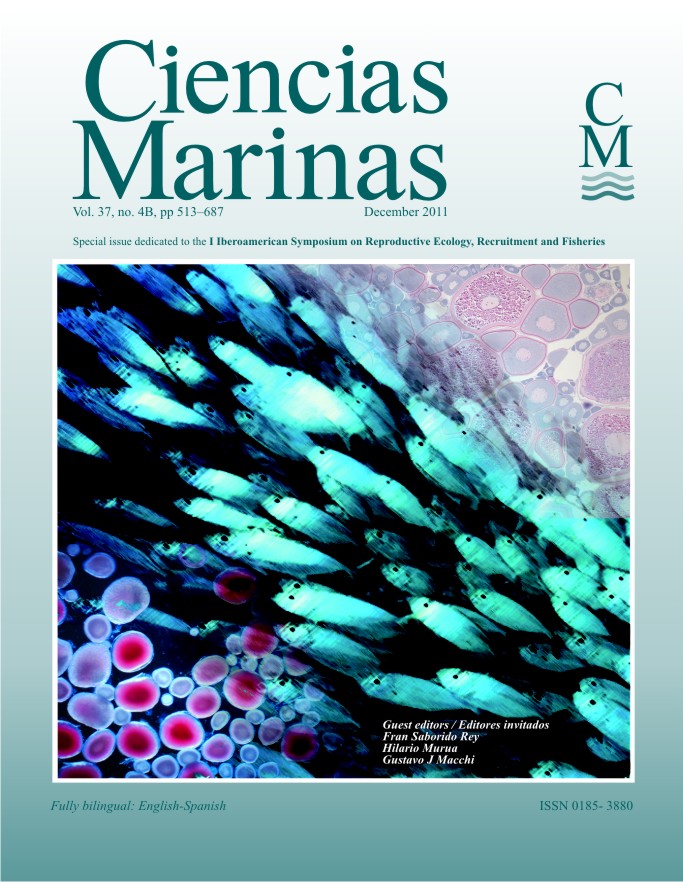Maternal influence on the variation of the reproductive cycle of Trisopterus luscus (Gadidae)
Main Article Content
Abstract
It is well documented and accepted that the reproductive potential of a population is not only influenced by the abundance of spawners but also by their age, size, and condition. Most studies of maternal effects on the reproductive potential have focused on factors such as egg production and quality, and less attention has been paid to the maternal influence on the temporal variation of the reproductive cycle. The present study introduces and describes some possible sources of variation in the reproductive cycle of the pouting Trisopterus luscus in Galician coastal waters (northwestern Iberian Peninsula). The reproductive cycle of this species was adequately examined and defined, and seasonal variations in maternal characteristics, such as size and energy status (available energy reserves), were also studied. The reproductive cycle seems to be perfectly synchronized with changes in environmental variables that occur in the ecosystem, as reflected in the strong seasonality of the spawning period. The results showed a clear effect of size mainly on the duration of the spawning season, the spawning season of larger females beginning earlier and lasting longer than that of smaller individuals. The proportion of developing females is positively related to available energy reserves. On the other hand, energy reserves vary depending on the sexual cycle and are significantly negatively related to the proportion of females in spawning condition. The latter is an indicator of the dependence of the reproductive cycle of this species with previously stored energy reserves.
Downloads
Article Details
This is an open access article distributed under a Creative Commons Attribution 4.0 License, which allows you to share and adapt the work, as long as you give appropriate credit to the original author(s) and the source, provide a link to the Creative Commons license, and indicate if changes were made. Figures, tables and other elements in the article are included in the article’s CC BY 4.0 license, unless otherwise indicated. The journal title is protected by copyrights and not subject to this license. Full license deed can be viewed here.

